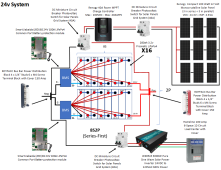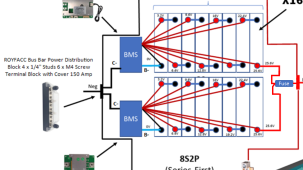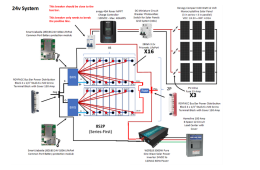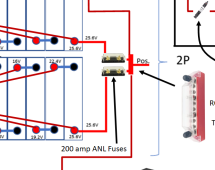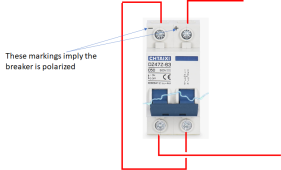That should work.
Fusing on batteries gets complicated.
The BMS has short circuit protection that will *almost* always pop before a fuse or breaker pops. However ,the BMS short circuit protection relies on a lot of complex circuits to operate and therefore a lot of people do not consider it reliable and additional protection is needed.
The additional protection can be added at the output of each battery or can be added after/at the busbar. In server rack batteries, most people add it after the busbar and that is what I typically do. However, if the wiring between the battery and the busbar is long and/or exposed, there should be fuses on each battery. (I will assume you will put it at/after the busbar) perhaps something like this:
View attachment 131493
The size of the fuse (Or breaker) needs to be large enough to handle the max continuous current. That will be current to the inverter.... so the same size as the breaker you have selected for the inverter. However, if you add the protection at the battery, you don't really need another one for the breaker.
View attachment 131494
The next logical question is "can it be a breaker instead of a fuse". The answer is yes.... but....
1) I tend to stay with fuses when the current gets above 100A and certainly at 200A.
2) If a breaker is used, it needs to have a very high Interrupt capability (This is NOT the same as the trip value). In a short circuit situation, the current from LifePO4 batteries will go extremely high long before the breaker opens the circuit. That means the breaker has to interrupt this very high current.
* Most people on the forum say there should be a class-T fuse with an interrupt rating of 20KA.
* The spec sheet of your breaker indicates it has a 10KA interrupt capability but the way it is wired it has two in parallel. I don't know if you can call that a total of 20KA.
* Victron is an excelent company and their sample designs use fuses with much lower interrupt capability.
